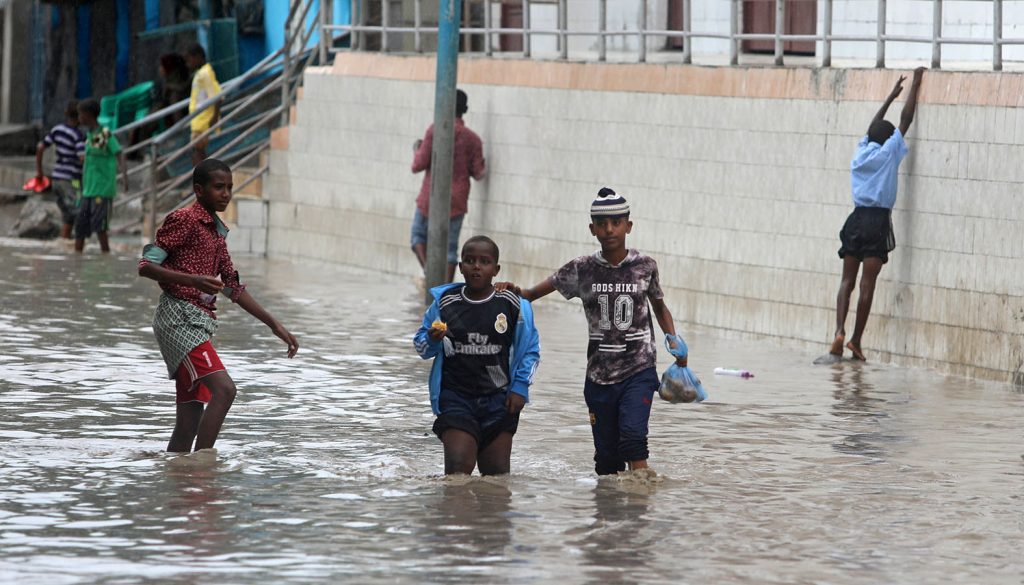East Africa is facing a “troubling” growing crisis in food security and the help of the United States is vitally needed, according to an official from Catholic Relief Services (CRS).
“Significantly below-average rainfall since March is contributing to rapid deterioration in pasture and water availability as well as poor cropping conditions across the Horn of Africa,” said Matt Davis, the CRS regional director.
CRS is the international development agency of the United States Conference of Catholic Bishops. The Trump administration is currently trying to cut aid to international aid organizations - including CRS - working in the region.
Davis told Crux inadequate rains coupled with harsh weather conditions have left many parts of East Africa facing drought conditions. In addition, the lack of water and reduced agriculture production has raised prices for food.
“Unfortunately, the level of conflict-induced displacement in certain areas, including pockets of Ethiopia, is exasperating the drought-induced needs. The overall situation is expected to further deteriorate over the coming months, as rainfall in March and early April was very low in many places. Poor rainfall is further forecasted for May through June, the end of the rainy season in some zones. The prospective failure of the long rains will affect not only the vulnerable areas, but also the traditionally high-yielding agricultural districts,” he explained.
Davis said CRS was “deeply concerned” not only about Ethiopia, but also South Sudan, Somalia, and Kenya.
According to the United Nations, at least 16 million people face hunger in east Africa-a situation driven by a combination of conflict, political apathy and drought.
The world body has described the situation as “the worst humanitarian crisis since World War II.”
It says in Ethiopia alone.more than 7 million people need emergency food aid. Local media in Kenya reported that at least ten people starved to death in the country in March, and over a million drought-hit Kenyans are currently at risk of starvation.
In Somalia, decades of conflict, terrorist attacks and continuing droughts have left much of the country without food, and half of the country’s 12.3 million people are estimated to be “severely” food insecure, and nearly three million people cannot reach their daily food needs.
In 2011, about 260,000 people died in Somalia due to a severe famine.
In South Sudan, the international aid charity Oxfam said 7.1 million people - half the population - are facing “extreme and deadly hunger” after a four-year civil war.
Davis warned the situation is expected to get worse, especially since the Trump administration has threatened to significantly cut its foreign aid budget.
“The potential of significant foreign aid reduction is extremely concerning, particularly with the current U.S. Administration’s attempts to cut critical relief and development funding accounts,” Davis told Crux.
He said CRS has urged Congress to reject Trump’s proposed cuts.
“Thankfully, there has been historic support from both Republicans and Democrats to maintain critical funding for accounts that are crucial to supporting communities coping with intensifying droughts and other crises,” he said. “Last year, Congress rejected similar cuts proposed by the Administration and we are hoping for the same in 2020.”
Davis also said that CRS was thankful for “the generous donations” of private citizens, as well as the coordination and partnership with the U.S. government’s USAID Office of Food for Peace and the Office of U.S. Foreign Disaster Assistance.
“Now would be the worst time for the United States, and other donor countries, to reduce lifesaving support. If the U.S. foreign aid budget is diminished this year, there is no doubt the suffering in East Africa will intensify,” he said.
In South Sudan, CRS has been working collaboratively with the UN World Food Program to airdrop food supplies where it is most needed; in Somalia, the Catholic charity provides emergency food aid for those displaced by violence and threat of the Islamic extremist group al-Shabaab, with the help of U.S. funding.
In Kenya, the relief agency works to improve families’ access to water in the driest parts of the country, thanks again to U.S. government funding, and in Ethiopia, CRS is partnering with the government to provide food aid in exchange for work on roads in rural communities, with the ultimate aim of getting people out of extreme poverty.

